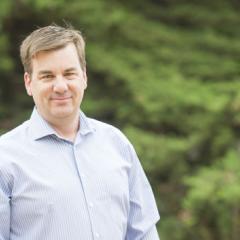In California, 1 million residents lack clean water. Solutions are on the way.
Editor's note: The following opinion piece by Lisa Beutler, Tori Klug and Switzer Fellow Mike Antos was first published on the Stantec website.
Access to clean, safe water isn’t a given. You may be surprised to hear that this morning, about a million Californians woke up without reliable access to safe and affordable drinking water. While a concerted, multi-dimensional effort ensures that most people in the US have safe drinking water on tap, many remain at risk because of challenges like increasing source water contamination, aging infrastructure, and increasing costs, to name a few.
In 2012, California became the first state in the country to declare there is a human right to water. In 2019, after years of advocacy by affected community members and environmental justice advocates, California passed new laws establishing the Safe and Affordable Drinking Water (SADW) Program. The SADW creates a $1.3-billion, 10-year effort to ensure everyone in the state can access safe clean water. The program, administered by the State Water Resources Control Board, will strengthen the technical, managerial, and financial (TMF) capacity of water systems in communities and regions throughout the state. The goal? Ensure long-term success at providing clean water for all Californians.
We believe that solving technical, managerial, and financial challenges without attention to the social and political dimensions will likely fail to provide sustainable solutions.
Building multi-dimensional capacity
A functioning water system relies on a complex web of social, political, technical, managerial, and financial capacities working together. Traditional TMF approaches may not be enough to achieve sustainable water management outcomes if they fail to incorporate social and political (SP) dimensions. While water managers generally recognize that community engagement is important, fully understanding the political and social context will be essential to supporting the improvement of failing water systems. Each failing water system will undoubtedly have a unique combination of strengths and weaknesses, so assessing the entire range of TMF/SP will better uncover where support or intervention will be most effective.
The SADW Program has an option to assign an administrator to support a failing water system. This piece of the program is still developing, but draft documents suggest administrators can either be narrowly focused on an identified technical issue or be tasked so broadly as to essentially serve as the staff and management of a water system—or anywhere in-between. Ensuring an administrator is aware and capable of properly supporting the social and political contexts will be an important step for the managers of the SADW. Assessing the full complexity of TMF/SP dimensions at a failing water system will set the stage for properly identifying the processes and resources that can build capacity and long-term water system sustainability.
To be successful, an administrator must adopt an ethic focused on collaborative and integrated decision-making led by community members. Many communities face burdens from historical and ongoing under-investment or marginalization. So sometimes, this may require leading uncomfortable, open discussions about the compounding social and political challenges that these communities experience—chronic underinvestment, disproportionate burdens of environmental contamination, and lack of representation in policymaking. Even through these challenges, these communities have remained proud, resilient, and strong. Recognizing and affirming these strengths must be part of the effort.
Integrated thinking for solutions that can be sustained
Actions implemented as a part of SADW may take many forms. TMF solutions could include construction of new water treatment facilities, physical interties between water systems, training for water system operators, or regionalization of certain managerial or technical capacities.
However, the challenges faced by a community may not be infrastructural. For instance, a small system that needs financial and technical advice in establishing a modern rate structure and billing system. Or, translation services at community meetings to ensure everyone can participate. Maybe training is needed on how to complete regulatory reporting more efficiently, or how to apply for grants or other financial support.
The identification and implementation of any of these solutions will require collaboration between diverse groups of people who are willing to recognize the expertise that each person brings to the table. For each of the solutions mentioned above, community participation in planning and decision-making can allow for insight into the specific strengths and needs of the community, and this understanding will be essential to success.
The human right to water is within reach
Designing sustainable water infrastructure and institutions—suited to the needs and resources of each community regardless of the exact TMF solutions—will be difficult to achieve and sustain without social consensus and political support. Building new relationships, or restoring trust in existing relationships, through implementation of the SADW will be a powerful way to bolster access to safe drinking water statewide.
California was the first state in the nation to create a statutory affirmation that all humans have a right to clean and affordable water for drinking and washing. Fortunately, most Californians already have access provided by a complex and competent effort by many public and private entities. For those without, the Safe and Affordable Drinking Water Program creates an exceptional opportunity to overcome technical, managerial, financial, social, and political challenges standing between where we are today and where we want to be tomorrow, together.
About the authors
Lisa Beutler specializes in helping organizations and communities make decisions and plan for the future. She serves as executive facilitator on complex, high-profile, collaborative projects. With her experience in strategic planning, leadership development, change management, executive consulting, public policy development, and conflict resolution, she’s comfortable working with a broad spectrum of clients and subjects.
Tori Klug believes that design is inherently connected to the natural, built, and sociopolitical environment—and that engineers work best when they understand how all three connect to their work. She aims to apply this curiosity about the details, and how the details fit together, to all her work
As a senior integrated water management specialist, Mike Antos works with our team in Pasadena to support the integration of physical and social systems to achieve more resilient and holistic water management. Whether it’s helping different technical experts align efforts for multiple benefits or facilitating open and trustworthy dialog between agencies and diverse communities, he does it all.

